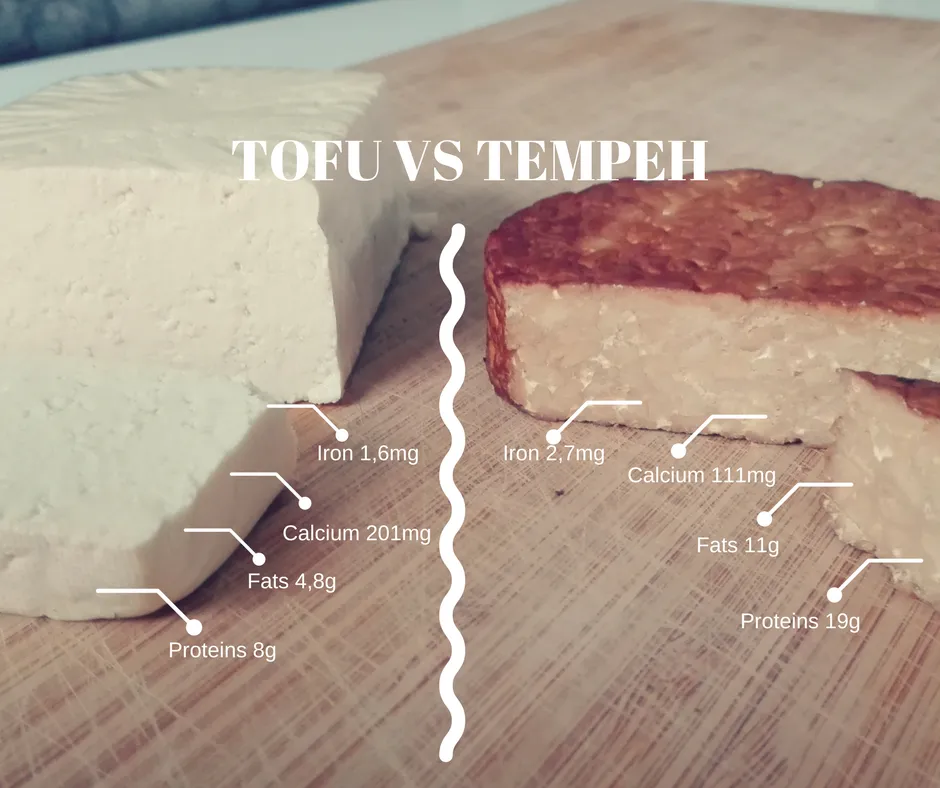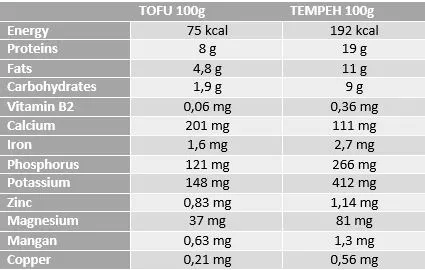Tofu or Tempeh?
There are probably no people who havn't heard about tofu, at least as a substitute of meat, eaten by vegans and vegetarians. Tofu can be found in most local grocery discounts, making it very popular in recent years. However, Tempeh is more and more popular too, as a better and healthier substitute for meat products. Below is a list of differences between these products.

Tofu - how is it created?
Tofu is formed in the process of coagulation of soy milk. Soybeans are first soaked, then ground with water, resulting in two products: okara and soy milk. After heating, the soy milk is subjected to a coagulant, e.g. lemon juice, magnesium sulfate or calcium, which separates the soy protein from the whey. The separated soy protein pellets (tofu) are then drained from excess liquid, loaded more or less, and stored under cold conditions.
Tofu - nutrients
Tofu contains 8% full-value protein. Tofu is also a source of calcium, as well as other minerals and vitamins: iron salts, phosphorus, potassium, sodium, B vitamins, choline and vitamin E. In 100g, the product has 80-100 kcal, including only 4.8g fat and are it's mainly healthy unsaturated fatty acids.
Tempeh - how is it created?
Tempeh is made from soybeans subjected to the fermentation process. Preparing tempeh begins with soaking soybeans. Then it is boiled with the addition of acidifying substance (usually vinegar), thanks to which conditions favorable for the growth of appropriate mushrooms are created. After straining and cooling the cooked grains, a starter containing the spores of Rhizopus oligosporus (fungi from the order of molds) is added to them and incubates 24-36 hours at a temperature of 30-42 ° C
Tempeh - nutrients
Tempeh contains 20% protein. Tempeh is a better source of iron, calcium and magnesium than meat. It also contains many other precious minerals such as copper, manganese and zinc. Tempeh is rich in vitamins B, B6, riboflavin and folic acid.
Like other fermented soy products, tempeh contains significantly less oligosaccharides and phytic acid compared to non-fermented soy products, thanks to which it is better digestible and its nutrients are better absorbed. In 100g of the product has 192 kcl, including 11 g of fat, and these are, just like in the case of tofu, mainly healthy unsaturated fatty acids.

Summary
It is worth noting that both tofu and tempeh are a great source of vegetable protein, which has an amino acid profile like whey protein, contains all the essential amino acids and can completely replace meat and dairy products in the diet. It is definitely worth eating both products as a valuable source of many microelements. Due to the price and availability, it is probably easier to reach for tofu, but it is also worth to stock up at Asian or health food stores at tempeh from time to time.
This post is a part of Veganwednesday contest organized by @heart-to-heart. It's very nice idea for sharing good vegan content!!!
